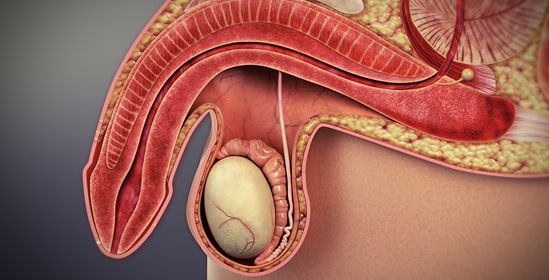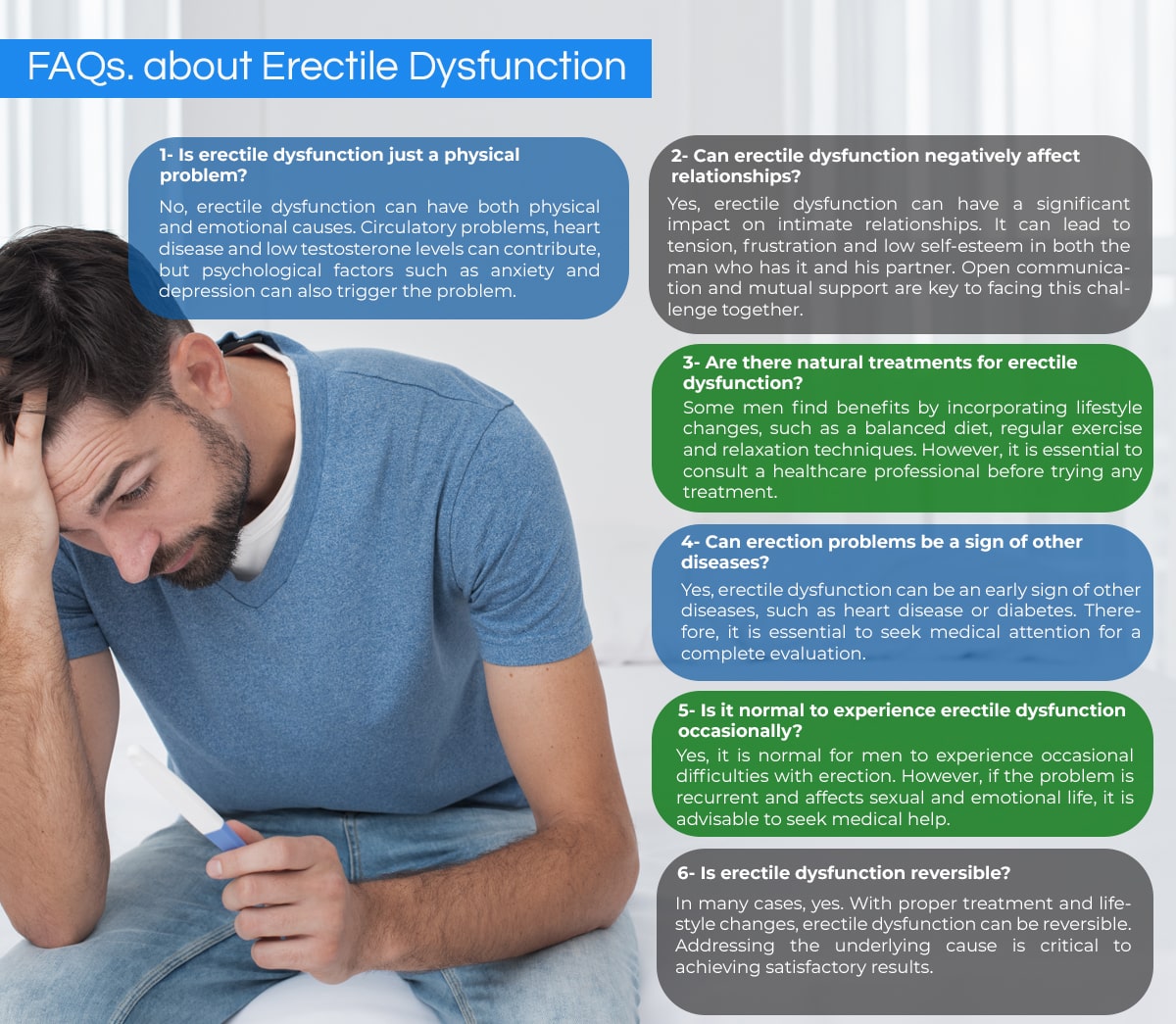Erectile dysfunction (ED) is a common male sexual disorder that affects millions of men worldwide.
Also known as impotence, ED is characterized by the inability to achieve or maintain an erection firm enough
for satisfactory sexual intercourse.
In this article, we will explore what erectile dysfunction is, look at some of the underlying causes,
and discuss the different treatments available.

What is erectile dysfunction?
Erectile dysfunction refers to a man’s persistent inability to achieve or maintain an erection firm enough for satisfactory sexual intercourse.
It can affect self-esteem, quality of life and personal relationships. ED can be occasional or chronic, and its incidence increases with age.
Causes of erectile dysfunction:
ED can have physical causes, psychological causes, or a combination of both.
Some of the most common causes include:
Physical causes:
-Cardiovascular disease, such as high blood pressure, heart disease or high cholesterol.
-Diabetes, which can damage nerves and blood vessels.
-Hormonal disorders, such as low testosterone levels.
-Obesity and lack of physical activity.
-Injuries to the spinal cord or genital area.
-Side effects of certain medications.
Psychological causes:
-Anxiety, stress or depression.
-Relationship problems or emotional difficulties.
-Low self-esteem or concern about sexual performance.
-Past traumatic or sexual experiences.

Treatments for erectile dysfunction:
Some of the most common include:
Lifestyle changes:
Adopt a balanced and healthy diet.
Maintain a healthy weight and engage in regular physical activity.
Avoid excessive consumption of alcohol and tobacco.
Reduce stress and learn relaxation techniques.
Psychological therapy:
Cognitive behavioral therapy can help address the psychological factors that contribute to erectile dysfunction.
Oral medications:
Phosphodiesterase type 5 inhibitors (such as sildenafil, tadalafil and vardenafil) are commonly prescribed medications that improve blood flow to the penis, which facilitates erection.
Vacuum therapy:
This method involves the use of a vacuum pump to create an erection, followed by the placement of a constriction ring at the base of the penis to maintain rigidity.

Intracavernous injections:
Medications (such as alprostadil) can be administered directly into the penis to induce an erection.
Hormone therapy:
In cases where testosterone deficiency is detected, hormone replacement therapy may be recommended to increase the levels of this hormone in the body.
Vacuum erection devices:
These devices are constriction devices around the penis that help maintain an erection.
They work by creating a vacuum around the penis to increase blood flow.
Penile implants:
For severe cases of erectile dysfunction that do not respond to other treatments, surgical placement of a penile implant may be considered.
These implants allow the man to have a manually controlled erection.

Conclusion
Erectile dysfunction is a common male sexual disorder that can affect quality of life and personal relationships. If you experience difficulty achieving or maintaining an erection, it is important to seek medical help to get a proper diagnosis and discuss treatment options. From lifestyle changes and psychological therapy to oral medications, vacuum devices and even surgery, there are a variety of options available to address erectile dysfunction.
Work collaboratively with your doctor to find the best treatment option for you and remember that erectile dysfunction is a common and treatable problem.




















